Archive for the ‘Seeing Things As They Are’ Category
Preventive Maintenance for People
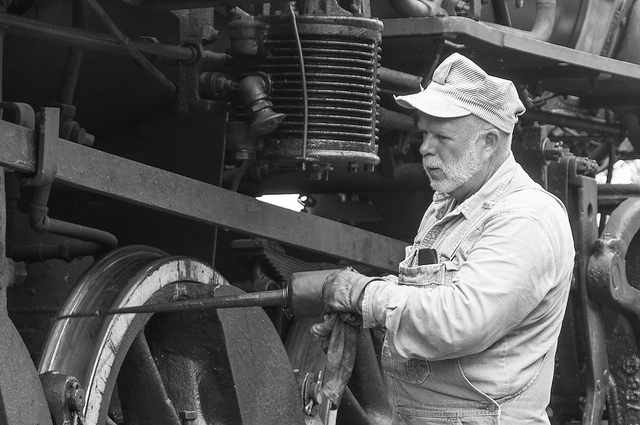 A car has a warning light to protect its engine from running too hot, and when the light goes off you pull over immediately and shut it down. You made a big investment in your car, and you want to make sure it runs for a long time. You respect the warning light. And if you’re late to work because your car overheated, everyone understands. They respect the warning light.
A car has a warning light to protect its engine from running too hot, and when the light goes off you pull over immediately and shut it down. You made a big investment in your car, and you want to make sure it runs for a long time. You respect the warning light. And if you’re late to work because your car overheated, everyone understands. They respect the warning light.
What if you had a warning light? What if you wore a sensor that’s wirelessly connected to your phone that measures your pulse or blood pressure, and your phone flashed a warning light when things get too hot? Would it be okay if you shut down immediately and went home? You and your company have made a big investment in you, and you want to make sure you run for a long time. Would you respect the warning light? Would your company respect the warning light? What’s the difference between a warning light for a car and a warning light for a person?
All machines come with an owner’s manual. In the manual, the manufacturer provides clear instructions on how to take care of the product so it runs well. Tighten the bolts every month, clean and inspect the electrical connections every six months and replace the wear parts per the table in the manual. And if you follow the instructions, the machine will run as advertised. But if you don’t follow the maintenance schedule, expect degraded performance or an unplanned breakdown. Everyone knows the machine must be shut down regularly for maintenance, or it won’t run right.
What if you had an owner’s manual, with clear instructions on how to take care of yourself? How about eight hours of sleep, balanced diet, exercise and some fun? And if you follow the instructions, you will run as advertised. But if you don’t, shouldn’t you and your company expect degraded performance and unplanned downtime? Doesn’t everyone know you must shut down regularly for maintenance or you won’t run right?
I want to perform as advertised, so I’m shutting down for vacation.
Image credit – Mark Fischer
The Duplicitous Relationship Between Time and Money
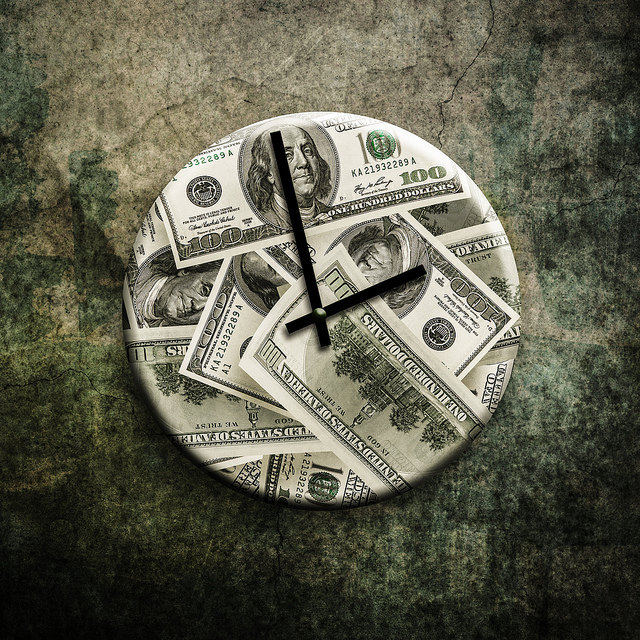 If you had a choice to make an extra year’s salary or live an extra year, which would you choose? If you had a choice to make an extra month’s salary or live an extra month, make the same choice? What about the trade between a week’s pay and a week of life? Does anything change when it’s a choice between ten years of salary and ten years of life? Does this thought experiment change anything for you? If not, no worries. It was a low-cost experiment.
If you had a choice to make an extra year’s salary or live an extra year, which would you choose? If you had a choice to make an extra month’s salary or live an extra month, make the same choice? What about the trade between a week’s pay and a week of life? Does anything change when it’s a choice between ten years of salary and ten years of life? Does this thought experiment change anything for you? If not, no worries. It was a low-cost experiment.
If you decided you had enough money, how would you change your behavior? Would you spend more time with your kids? Would you take the time to decompress and enjoy what you have? Or would you spend more money so no longer had enough? What if next week you pretend you have enough money? Would things change? Is there a downside to spending more time with your family next week? Why not try it?
If every day you reminded yourself your lifespan was finite, would you live differently? If you reminded yourself every morning for the next week, would things change? It’s a low-cost experiment, and only the first two mornings are scary. The experiment is free. Why not try?
What if you decided you didn’t want a promotion? Would you work differently? Would you use more judgment because the cost of failure is lower? Would you take more initiative? Would you say no more often? Or would you say yes more often? Would you choose to work on different projects? Why not try it for a week? Who knows, you may get a promotion.
What if you decided you had enough stuff? What would you do with the extra money? Would give some to charity? Would you save up and buy more stuff? For the next week, why not remove one thing from your house and recycle it or give it away? You may teach yourself you have too much stuff; you may teach yourself your house looks better when it’s less cluttered, or you may feel good that your gift helped someone who didn’t have enough. There’s little downside to more pocket change, a decluttered house and helping others. Why not try it next week?
Every day we make trades between time and money, but we make them in a below-the-water-level way. And every day we choose between having enough or not, and, again, we make these choices in a less-than-fully-conscious way. But these choices are far too important to make lightly.
Why not make some time every day to quiet yourself so you can be more aware of the day’s decisions? It’s a low-cost experiment that could bring more clarity to your decision-making. Why not try it for a week?
image credit – Tax Credits
Working with uncertainty
 Try – when you’re not sure what to do.
Try – when you’re not sure what to do.
Listen – when you want to learn.
Build – when you want to put flesh on the bones of your idea.
Think – when you want to make progress.
Show a customer – when you want to know what your idea is really worth.
Put it down – when you want your subconscious to solve a problem.
Define – when you want to solve.
Satisfy needs – when you want to sell products
Persevere – when the status quo kicks you in the shins.
Exercise – when you want set the conditions for great work.
Wait – when you want to run out of time and money.
Fear failure – when you want to block yourself from new work.
Fear success – when you want to stop innovation in its tracks.
Self-worth – when you want to overcome fear.
Sleep – when you want to be on your game.
Chance collision – when you want something interesting to work on.
Write – when you want to know what you really think.
Make a hand sketch – when you want to communicate your idea.
Ask for help – when you want to succeed.
Image credit – Daniel Dionne
Rule 1: Allocate resources for effectiveness.
 We live in a resource constrained world where there’s always more work than time. Resources are always tighter than tight and tough choices must be made. The first choice is to figure out what change you want to make in the world. How do you want put a dent in the universe? What injustice do you want to put to rest? Which paradigm do you want to turn on its head?
We live in a resource constrained world where there’s always more work than time. Resources are always tighter than tight and tough choices must be made. The first choice is to figure out what change you want to make in the world. How do you want put a dent in the universe? What injustice do you want to put to rest? Which paradigm do you want to turn on its head?
In business and in life, the question is the same – How do you want to spend your time?
Before you can move in the right direction, you need a direction. At this stage, the best way to allocate your resources is to define the system as it is. What’s going on right now? What are the fundamentals? What are the incentives? Who has power? Who benefits when things move left and who loses when things go right? What are the main elements of the system? How do they interact? What information passes between them? You know you’ve arrived when you have a functional model of the system with all the elements, all the interactions and all the information flows.
With an understanding of how things are, how do you want to spend your time? Do you want to validate your functional model? If yes, allocate your resources to test your model. Run small experiments to validate (or invalidate) your worldview. If you have sufficient confidence in your model, allocate your resources to define how things could be. How do you want the fundamentals to change? What are the new incentives? Who do you want to have the power? And what are the new system elements, their new interactions and new information flows?
When working in the domain of ‘what could be’ the only thing to worry about is what’s next. What’s after the next step? Not sure. How many resources will be required to reach the finish line? Don’t know. What do we do after the next step? It depends on how it goes with this step. For those that are used to working within an efficiency framework this phase is a challenge, as there can be no grand plan, no way to predict when more resources will be needed and no way to guarantee resources will work efficiently. For the ‘what could be’ phase, it’s better to use a framework of effectiveness.
In a one-foot-in-front-of-the-other way, the only thing that matters in the ‘what could be’ domain is effectively achieving the next learning objective. It’s not important that the learning is done most efficiently, it matters that the learning is done well and done quickly. Efficiently learning the wrong thing is not effective. Running experiments efficiently without learning what you need to is not effective. And learning slowly but efficiently is not effective.
Allocate resources to learn what needs to be learned. Allocate resources to learn effectively, not efficiently. Allocate your best people and give them the time they need. And don’t expect an efficient path. There will be unplanned lefts and rights. There will be U-turns. There will times when there’s lots of thinking and little activity, but at this stage activity isn’t progress, thinking is. It may look like a drunkard’s walk, but that’s how it goes with this work.
When the objective of the work isn’t to solve the problem but to come up with the right question, allocate resources in a way that prioritizes effectiveness over efficiency. When working in the domain of ‘what could be’ allocate resources on the learning objective at hand. Don’t worry too much about the follow-on learning objectives because you may never earn the right to take them on.
In the domain of uncertainty, the best way to allocate the resources is to learn what you need to learn and then figure out what to learn next.
Image credit – John Flannery
What’s an innovator to do?
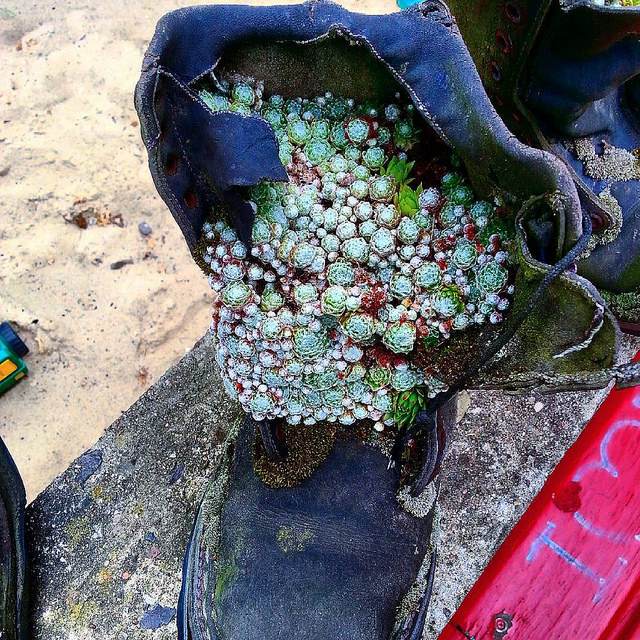 Disruption, as a word, doesn’t tell us what to do or how to do it. Disruption, as a word, it’s not helpful and should be struck from the innovation lexicon. But without the word, what’s an innovator to do?
Disruption, as a word, doesn’t tell us what to do or how to do it. Disruption, as a word, it’s not helpful and should be struck from the innovation lexicon. But without the word, what’s an innovator to do?
If you have a superpower, misuse it. Your brand’s special capability is well known in your industry, but not in others. Thrust your uniqueness into an unsuspecting industry and provide novel value in novel ways. Take it by storm. Contradict the established players. Build momentum quickly and quietly. Create a step function improvement. Create new lines of customer goodness. Do things that haven’t been done. Turn no to yes.
Don’t adapt your special capability, use it as-is. Adaptation is good, but it’s better to flop the whole thing into the new space. Don’t think graft, think transplant. Adaptation brings only continuous improvement. It’s better to serve up your secret sauce uncut and unfiltered because that brings discontinuous improvement.
Know the needs your product fulfills and meet those needs in another industry. Some say it’s better to adapt your product to other industries, and to achieve a reasonable CAGR, adaptation is good. But if you’re looking for an unreasonable CAGR, if you’re looking to stand things on their head, try to use your product as-is. When you can use your product as-is in another industry, you connect dots only you can connect and meet needs in ways only you can. You bring non-intuitive solutions. You violate routines of accepted practice and your trajectory is not limited by the incumbents’ ruts of success. You’ll have a whole new space for yourself. No sharing required.
But how?
Simply and succinctly, define what your product does. Then, make it generic and look to misapply the goodness in a different application. For example, manufacturers of large and expensive furniture wrap their products in huge plastic bags to keep the furniture dry and clean during shipping. Generically, the function becomes: use large plastic bags to temporarily protect large and expensive products from becoming wet. Using that goodness in a new application, people who live in flood areas use the large furniture bags to temporarily protect their cars from water damage. Just before the flood arrives, they drive their cars into large plastic bags and tie them off. The bags keep their car dry when the water comes. Same bag, same goodness, completely unrelated application.
And there’s another way. Your product has a primary function that provides value to your customers. But, there is unrealized value in your product that your existing customers don’t value. For example, if your company has a proprietary process to paint products in a way that results in a high gloss finish, your customers buy your coating because it looks good. But, the coating may also create a hard layer and increase wear resistance that could be important in another application. Because your coating is environmentally friendly and your process is low-cost, new customers may want you to coat their parts so they can be used in a previously non-viable application. There is unrealized value in your products that new customers will pay for.
To see the unrealized value, use the strength-as-a-weakness method. Define two constraints: you must sell to new customers in a new industry and the primary goodness, why people buy your product, must be a weakness. For example, if your product is fast, you’ve got to use unrealized value to sell a slow one. If it’s heavy, the new one must be light. If small, the new one must be large. In that way, you are forced to rely on new lines of goodness and unrealized value to sell your product.
Don’t stop continuous improvement and product adaptation. They’re valuable. But, start some discontinuous improvement, step function increases and purposeful misuse. Keep selling to the same value to the same customers, but start selling to new customers with previously unrealized value that has been hiding quietly in your product for years.
Evolution is good, but exaptation is probably better.
Image credit – Sor Betto
See differently to solve differently.
 There are many definitions for creativity and innovation, but none add meaningfully to how the work is done. Though it’s clear why the work is important – creativity and innovation underpin corporate prosperity and longevity – it’s especially helpful to know how to do it.
There are many definitions for creativity and innovation, but none add meaningfully to how the work is done. Though it’s clear why the work is important – creativity and innovation underpin corporate prosperity and longevity – it’s especially helpful to know how to do it.
At the most basic level, creativity and innovation are about problem solving. But it’s a special flavor of problem solving. Creativity and innovation are about problems solving new problems in new ways. The glamorous part is ‘solving in new ways’ and the important part is solving new problems.
With continuous improvement the same problems are solved over and over. Change this to eliminate waste, tweak that to reduce variation, adjust the same old thing to make it work a little better. Sure, the problems change a bit, but they’re close cousins to the problems to the same old problems from last decade. With discontinuous improvement (which requires high levels of creativity and innovation) new problems are solved. But how to tell if the problem is new?
Solving new problems starts with seeing problems differently.
Systems are large and complicated, and problems know how to hide in the nooks and crannies. In a Where’s Waldo way, the nugget of the problem buries itself in complication and misuses all the moving parts as distraction. Problems use complication as a cloaking mechanism so they are not seen as problems, but as symptoms.
Telescope to microscope. To see problems differently, zoom in. Create a hand sketch of the problem at the microscopic level. Start at the system level if you want, but zoom in until all you see is the problem. Three rules: 1. Zoom in until there are only two elements on the page. 2. The two elements must touch. 3. The problem must reside between the two elements.
Noun-verb-noun. Think hammer hits nail and hammer hits thumb. Hitting the nail is the reason people buy hammers and hitting the thumb is the problem.
A problem between two things. The hand sketch of the problem would show the face of the hammer head in contact with the surface of the thumb, and that’s all. The problem is at the interface between the face of the hammer head and the surface of the thumb. It’s now clear where the problem must be solved. Not where the hand holds the shaft of the hammer, not at the claw, but where the face of the hammer smashes the thumb.
Before-during-after. The problem can be solved before the hammer smashes the thumb, while the hammer smashes the thumb, or after the thumb is smashed. Which is the best way to solve it? It depends, that’s why it must be solved at the three times.
Advil and ice. Solving the problem after the fact is like repair or cleanup. The thumb has been smashed and repercussions are handled in the most expedient way.
Put something between. Solving the problem while it happens requires a blocking or protecting action. The hammer still hits the thumb, but the protective element takes the beating so the thumb doesn’t.
Hand in pocket. Solving the problem before it happens requires separation in time and space. Before the hammer can smash the thumb it is moved to a safe place – far away from where the hammer hits the nail.
Nail gun. If there’s no way for the thumb to get near the hammer mechanism, there is no problem.
Cordless drill. If there are no nails, there are no hammers and no problem.
Concrete walls. If there’s no need for wood, there’s no need for nails or a hammer. No hammer, no nails, no problem.
Discerning between symptoms and problems can help solve new problems. Seeing problems at the micro level can result in new solutions. Looking closely at problems to separate them time and space can help see problems differently.
Eliminating the tool responsible for the problem can get rid of the problem of a smashed thumb, but it creates another – how to provide the useful action of the driven nail. But if you’ve been trying to protect thumbs for the last decade, you now have a chance to design a new way to fasten one piece of wood to another, create new walls that don’t use wood, or design structures that self-assemble.
Image credit – Rodger Evans
The Effective Expert
 What if you’re asked to do something you know isn’t right? Not from an ethical perspective, but from a well-read, well-practiced, world-thought-leader perspective? What if you know it’s a waste of time? What if you know it sets a dangerous precedent for doing the wrong work for the right reason? What if the person asking is in a position of power? What if you know they think they’re asking for the right work?
What if you’re asked to do something you know isn’t right? Not from an ethical perspective, but from a well-read, well-practiced, world-thought-leader perspective? What if you know it’s a waste of time? What if you know it sets a dangerous precedent for doing the wrong work for the right reason? What if the person asking is in a position of power? What if you know they think they’re asking for the right work?
Do you delay and make up false reasons for the lack of progress? Do you get angry because you expect people in power know what they’re doing? Does your anger cause you to double-down on delay? Or does it cause you to take a step back and regroup? Or do you give them what they ask for, knowing it will make it clear they don’t know what they’re doing?
What if you asked them why they want what they want? What if when you really listened you heard their request for help? What if you recognized they weren’t comfortable confiding in you and that’s why they didn’t tell you they needed your help? What if you could see they did not know how to ask? What if you realized you could help? What if you realized you wanted to help?
What if you honored their request and took an approach that got the right work done? What if you used their words as the premise and used your knowledge and kindness to twist the work into what it should be? What if you realized they gave you a compliment when they asked you to do the work? Better still, what if you realized you were the only person who could help and you felt good about your realization?
As subject matter experts, it’s in our best interest to have an open mind and an open heart. Sure, it’s important to hang onto our knowledge, but it’s also important to let go our strong desire to be right and do all we can to improve effectiveness.
If we are so confident in our knowledge, shouldn’t it be relatively easy to give others the benefit of the doubt and be respectful of the possibility there may be a deeper fundamental behind the request for the “wrong work”?
As subject matter experts, our toughest job is to realize we don’t always see the whole picture and things aren’t always as they seem. And to remain open, it’s helpful to remember we became experts by doing things wrong. And to prioritize effectiveness, until proven otherwise, it’s helpful to assume everyone has good intentions.
Image credit — Ingrid Taylar
Innovation and the Mythical Idealized Future State
 When it’s time to innovate, the first task is usually to define the Idealized Future State (IFS). The IFS is a word picture that captures what it looks like when the innovation work has succeeded beyond our wildest dreams. The IFS, so it goes, is directional so we can march toward the right mountain and inspirational so we can sustain our pace over the roughest territory.
When it’s time to innovate, the first task is usually to define the Idealized Future State (IFS). The IFS is a word picture that captures what it looks like when the innovation work has succeeded beyond our wildest dreams. The IFS, so it goes, is directional so we can march toward the right mountain and inspirational so we can sustain our pace over the roughest territory.
For the IFS to be directional, it must be aimed at something – a destination. But there’s a problem. In a sea of uncertainty, where the work has never been done before and where there are no existing products, services or customers, there are an infinite number of IFRs/destinations to guide our innovation work. Open question – When the territory is unknown, how do we choose the right IFS?
For the IFS to be inspirational, it must create yearning for something better (the destination). And for the yearning to be real, we must believe the destination is right for us. Open question – How can we yearn for an IFS when we really can’t know it’s the right destination?
Maps aren’t the territory, but they are a collection of all possible destinations within the design space of the map. If you have the right map, it contains your destination. And for a long time now, the old paper maps have helped people find their destinations. But on their own maps don’t tell us the direction to drive. If you have a map of the US and you want to drive to Kansas, in which direction do you drive? It depends. If in California, drive east; if in Mississippi, drive north; if in New Hampshire, drive west; and in Minnesota, drive south. If Kansas is your idealized future state, the map alone won’t get your there. The direction you drive depends on your location.
GPS has been a nice addition to maps. Enter the destination on the map, ask the satellites to position us globally and it’s clear which way to drive. (I drive west to reach Kansas.) But the magic of GPS isn’t in the electronic map, GPS is magic because it solves the location problem.
Before defining the idealized future state, define your location. It grounds the innovation work in the reality of what is, and people can rally around what is. And before setting the innovation direction with the IFS, define the next problems to solve and walk in their direction.
Image credit – Adrian Brady
Forecasting The Next Big Technology
 When a hurricane is on the horizon, we are all glued to our TVs. We want to know where it track so we know we’ll be safe. Will it track north and rumble over the top of us or will it track east and head out to sea? This is not trivial. In one scenario we lose our house and in the other the crazy surfers get to ride huge waves.
When a hurricane is on the horizon, we are all glued to our TVs. We want to know where it track so we know we’ll be safe. Will it track north and rumble over the top of us or will it track east and head out to sea? This is not trivial. In one scenario we lose our house and in the other the crazy surfers get to ride huge waves.
The meteorologist shows us a time-lapse of the storm center hour-by-hour. It was one hundred miles off shore an hour ago, it’s fifty miles off shore now and it will hit the shoreline in an hour. Drawing a line from where it was, through its location in the moment, the meteorologist can extrapolate where it will be an hour from now. In the short term, the storms trajectory will be unchanged and its momentum will help it maintain its pace. It’s pretty clear to everyone where the storm will be in an hour. No magic here.
But the good meteorologists can forecast a hurricane’s path days in advance. In a phenomenological way, they use behavior models of past storms, assume this storm is like past storms, turn the crank and forecast its trajectory. And they’re right more times than not. And they’re right enough to determine who should evacuate and who should sit tight. This is borderline magic.
The best meteorologists know where hurricanes want go because they understand hurricanes. They know hurricanes want to run in straight lines, if not follow gentle curves. They know hurricanes get anxious when they hop from sea to land, and they know, given the choice, will skirt the coastline and head back home to the salt water. Meteorologists know the rules hurricane’s live by and use that knowledge to tighten their forecast of the storm’s path.
Just as hurricanes have a desire to follow their hearts, technologies have a similar desire climb the evolutionary ladder. Just as hurricanes behave like their predecessors, technologies behave like their grandparents, aunts and uncles. And just as a meteorologist, using their knowledge of historical patterns and an understanding of hurricane genetics can forecast the path of a hurricane, technologists can forecast the path of technologies using historical patterns and an understanding of what technologies want.
And like with hurricanes, the best way to forecast the path of a technology is to define where it was, draw a line through where it is and project its trajectory into the future. Like hurricanes, technologies move in straight lines or gentle S-curves, so their next move is easy to forecast. If a technology has improved year-over-year, it will likely continue to improve. And if this year’s performance is the same as last year, it’s behavior will remain unchanged going forward. That’s how it goes with technologies.
The best technologists are like horse whisperers in that they can hear the inner voice of technologies. They know when a technology is ready to grow from infant to adolescent and know when a technology is ready to retire. The best technologists can read the tea leaves of the patent landscape and, knowing the predisposition of technologies, can forecast the next evolution. But just as some ranch owners don’t believe in horse whisperers, some company leaders don’t believe technology whisperers can forecast technologies.
But for believers and non-believers alike, it’s more effective to compare forecasting capabilities of technologists with the forecasting capabilities of meteorologists. The notions of trajectory and momentum have clear physical interpretations for hurricanes and technologies, and historical models of storm trajectories map directly to evolutionary paths of technologies.
If you’re looking to forecast where the next big storm will make landfall, hire a great meteorologist. But if you’re looking to forecast when the next technology will rip the roof off your business model, hire a great technology whisperer.
Image credit – NASA
Improving What Is and Creating What Isn’t
There are two domains – what is and what isn’t. We’re most comfortable in what is and we don’t know much about what isn’t. Neither domain is best and you can’t have one without the other. Sometimes it’s best to swim in what is and other times it’s better to splash around in what isn’t. Though we want them, there are no hard and fast rules when to swim and when to splash.
Improvement lives in the domain of what is. If you’re running a Six Sigma project, a lean project or a continuous improvement program you’re knee deep in what is. Measure, analyze, improve, and control what is. Walk out to the production floor, count the machines, people and defects, measure the cycle time and eliminate the wasteful activities. Define the current state and continually (and incrementally) improve what is. Clear, unambiguous, measurable, analytical, rational.
The close cousins creativity and innovation live in the domain of what isn’t. They don’t see what is, they only see gaps, gulfs and gullies. They are drawn to the black hole of what’s missing. They define things in terms of difference. They care about the negative, not the image. They live in the Bizarro world where strength is weakness and far less is better than less. Unclear, ambiguous, intuitive, irrational.
What is – productivity, utilization, standard work. What isn’t – imagination, unstructured time, daydreaming. Predictable – what is. Unknowable – what isn’t.
In the world of what is, it’s best to hire for experience. What worked last time will work this time. The knowledge of the past is all powerful. In the world of what isn’t, it’s best to hire young people that know more than you do. They know the latest technology you’ve never heard of and they know its limitations.
Improving what is pays the bills while creating what isn’t fumbles to find the future. But when what is runs out of gas, what isn’t rides to the rescue and refuels. Neither domain is better, and neither can survive without the other.
The magic question – what’s the best way to allocate resources between the domains? The unsatisfying answer – it depends. And the sextant to navigate the dependencies – good judgement.
Image credit – JD Hancock
With innovation, it depends.
 By definition, when the work is new there is uncertainty. And uncertainty can be stressful. But, instead of getting yourself all bound up, accept it. More than that, relish in it. Wear it as a badge of honor. Not everyone gets the chance to work on something new – only the best do. And, because you’ve been asked to do work with a strong tenor of uncertainty, someone thinks you’re the best.
By definition, when the work is new there is uncertainty. And uncertainty can be stressful. But, instead of getting yourself all bound up, accept it. More than that, relish in it. Wear it as a badge of honor. Not everyone gets the chance to work on something new – only the best do. And, because you’ve been asked to do work with a strong tenor of uncertainty, someone thinks you’re the best.
But uncertainty is an unknown quantity, and our systems have been designed to reject it, not swim in it. When companies want to get serious they drive toward a culture of accountability and the new work gets the back seat. Accountability is mis-mapped to predictability, successful results and on time delivery. Accountability, as we’ve mapped it, is the mortal enemy of new work. When you’re working on a project with a strong element of uncertainty, the only certainty is the task you have in front of you. There’s no certainty on how the task will turn out, rather, there’s only the simple certainty of the task.
With work with low uncertainty there are three year plans, launch timelines and predictable sales figures. Task one is well-defined and there’s a linear flow of standard work right behind it – task two through twenty-two are dialed in. But when working with uncertainty, the task at hand is all there is. You don’t know the next task. When someone asks what’s next the only thing you can say is “it depends.” And that’s difficult in a culture of traditional accountability.
An “it depends” Gannt chart is an oxymoron, but with uncertainty step two is defined by step one. If A, then B. But if the wheels fall off, I’m not sure what we’ll do next. The only thing worse than an “it depends” Gantt chart is an “I’m not sure” Gannt chart. But with uncertainty, you can be sure you won’t be sure. With uncertainty, traditional project planning goes out the window, and “it depends” project planning is the only way.
With uncertainty, traditional project planning is replaced by a clear distillation of the problem that must be solved. Instead of a set of well-defined tasks, ask for a block diagram that defines the problem that must be solved. And when there’s clarity and agreement on the problem that must be solved, the supporting tasks can be well-defined. Step one – make a prototype like this and test it like that. Step two – it depends on how step one turns out. If it goes like this then we’ll do that. If it does that, we’ll do the other. And if it does neither, we’re not sure what we’ll do. You don’t have to like it, but that’s the way it is.
With uncertainty, the project plan isn’t the most important thing. What’s most important is relentless effort to define the system as it is. Here’s what the system is doing, here’s how we’d like it to behave and, based on our mechanism-based theory, here’s the prototype we’re going to build and here’s how we’re going to test it. What are we going to do next? It depends.
What’s next? It depends. What resources do you need? It depends. When will you be done? It depends.
Innovation is, by definition, work that is new. And, innovation, by definition, is uncertain. And that’s why with innovation, it depends. And that’s why innovation is difficult.
And that’s why you’ve got to choose wisely when you choose the people that do your innovation work.
Image credit – Sara Biljana Gaon (off)
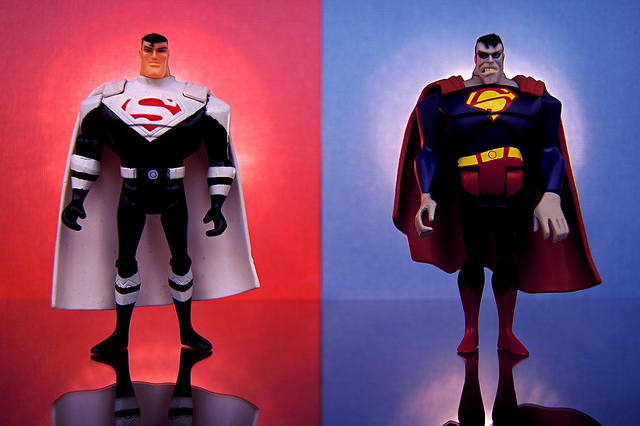
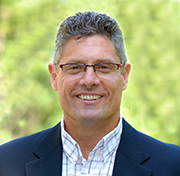 Mike Shipulski
Mike Shipulski